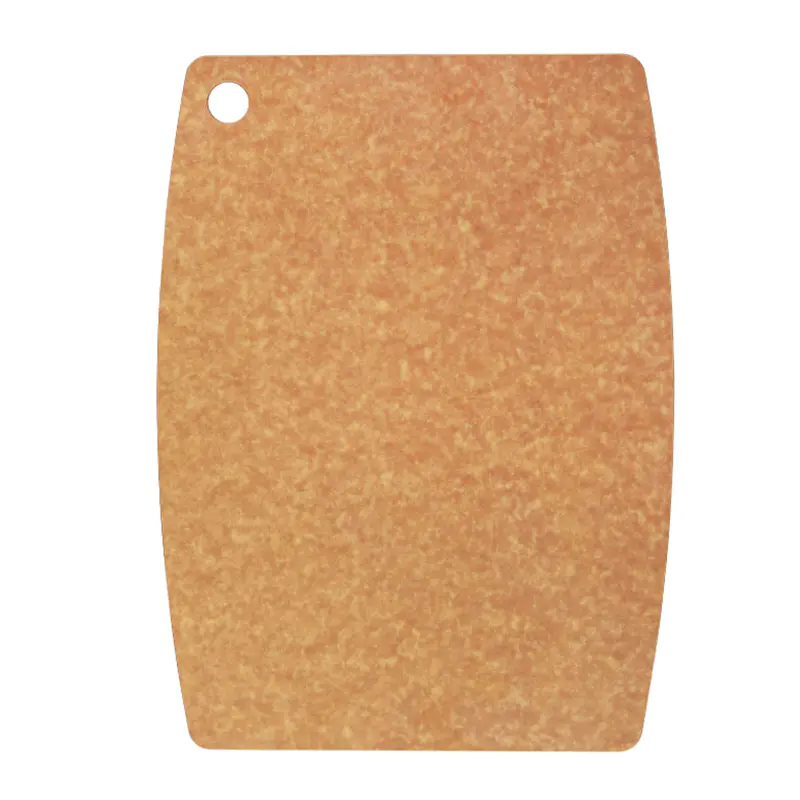A new wood fiber cutting board arrives thirsty, its compressed fibers eager for conditioning before first contact with blade or beet. Begin by washing the board in warm water with mild soap to remove factory dust; then pat dry with a lint-free towel. While the surface is still slightly damp, drizzle one tablespoon of food-grade mineral oil across the center. Using circular motions, spread the oil to every corner, edge, and groove; the fibers drink it in, darkening to a rich caramel hue. Allow the board to rest overnight on a wire rack so gravity distributes the oil evenly. The next morning, buff away excess with a soft cloth until the surface feels satin-smooth. This initial seasoning creates a moisture-resistant barrier, preventing swelling when tomatoes release their juices. Repeat the oiling process weekly for the first month, then monthly thereafter; frequency increases in arid climates or near heating vents. Between oilings, daily care is refreshingly simple: scrape off stuck herbs with the spine of a knife, rinse quickly, and stand the board upright to dry. Avoid prolonged soaking or dishwasher cycles, because steam can delaminate compressed fibers. If the board begins to feel fuzzy, lightly sand with 400-grit paper, wipe away dust, and re-oil to restore its polished luster. Every six months, apply a beeswax-mineral oil blend for extra protection; the wax fills micro-grooves, repelling onion odors and beet stains. With consistent seasoning and gentle handling, your wood fiber cutting board will age gracefully, developing a patina that narrates countless meals shared with friends and family.
Rechercher
Catégories
- Politics
- Domicile
- Wellness
- Theater
- Sports
- Shopping
- Religion
- Party
- Autre
- Networking
- Music
- Literature
- Art
- Health
- Gardening
- Jeux
- Food
- Fitness
- Film
- Drinks
- Dance
- Crafts
- Causes
Lire la suite
Middle East and Africa Elastomer Coated Fabrics Market Trends, Demand, Opportunities and Forecast By 2032
Comprehensive Outlook on Executive Summary Middle East and Africa Elastomer Coated Fabrics...
Fast and Simple Decentralized Exchange Setup
The world of cryptocurrency continues to expand rapidly, and decentralized exchanges (DEXs) are...
How to Build a Super Clone App in 2025: The Ultimate Guide
Hello, Aspiring Entrepreneurs!
In a world where convenience defines success, super apps are...
Coolant Thickener Market Growth Set to Surge Significantly during 2024 to 2031 | Clariant, Balaji Orgochem, Acuro Organics, Chemtex Speciality Limited
Coolant Thickener Market report has recently added by Analytic Insights Hub which helps to make...
Medical Imaging Equipment Market Outlook Analytical Overview, Historical Analysis, Gross Profit (2021-2031)
The medical imaging equipment market size is expected to reach US$ 62,509.98 million by 2031 from...


